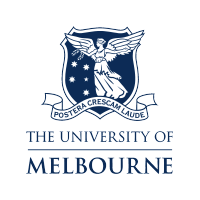Curriculum
Causal Inference (CSI)
This unit covers modern statistical methods for assessing the causal effect of a treatment or exposure from randomised or observational studies.
COORDINATORS:


General outline
Prerequisites
Epidemiology, Mathematical Foundations for Biostatistics, Regression Modeling for Biostatistics 1 or a multivariable regression unit of study from a Master of Public Health course or equivalent
Time commitment
8-12 hours total study time per week
Semester availability
Semester 1
Assessment
Two major assignments worth 30% each, and 4 shorter assignments worth 10% each concerning concepts, derivations or applications.
Prescribed Texts
Hernán MA, Robins JM (2020). Causal Inference. Boca Raton: Chapman & Hall/CRC [but free to download (as of August 2021)] https://www.hsph.harvard.edu/miguel-hernan/causal-inference-book/ ]
Special Computer Requirements
Stata and R statistical softwareContent
The unit begins by explaining the fundamental concept of counterfactual or potential outcomes and introduces causal diagrams (or directed acyclic graphs (DAGs) to visually identify confounding, selection and other biases that prevent unbiased estimation of causal effects. Key issues in defining causal effects that are able to be estimated in a range of contexts are presented using the concept of the “target trial” to clarify exactly what the analysis seeks to estimate. A range of statistical methods for analysing data to produce estimates of causal effects are then introduced. Propensity score and related methods for estimating the causal effect of a single time point exposure are presented, together with extensions to longitudinal data with multiple exposure measurements, and methods to assess whether the effect of an exposure on an outcome is mediated by one or more intermediate variables. Comparisons will be made throughout with “conventional” statistical methods. Emphasis will be placed on interpretation of results and understanding the assumptions required to allow causal conclusions. Stata and R software will be used to apply the methods to real study datasets.
Resources
Course notes, online mini-lecture videos, online tutorials, discussion board
Notes
*Prerequisites for CSI are EPI, MFB, and RM1 or a multivariable regression unit of study from an MPH course or equivalent.




